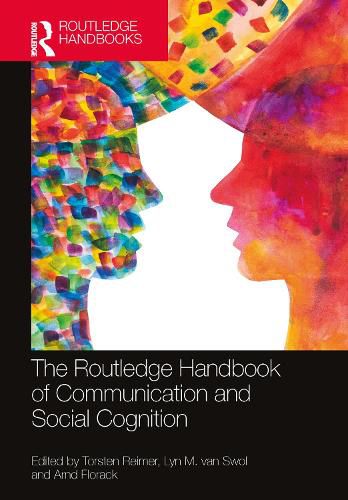Readings Newsletter
Become a Readings Member to make your shopping experience even easier.
Sign in or sign up for free!
You’re not far away from qualifying for FREE standard shipping within Australia
You’ve qualified for FREE standard shipping within Australia
The cart is loading…






This handbook provides a comprehensive understanding of theory, research, and applications of research in communication and social cognition.
Written by leading figures across an array of disciplines, chapters in this handbook explicate the interplay of communication and social cognition to form a vantage point for the study of concepts such as framing, stereotypes, social perceptions, mood and affect, intergroup conflict, media effects, decision making, and language and thought that are widely used in the social, cognitive, and behavioural sciences. The book is divided into seven sections: the first two sections reflect basic discussions about how processes of thought and communication are related and how social realities are influenced by aspects of communication; sections 3 to 6 address specified fields including interpersonal communication, communication between groups, digital communication, and communication in applied fields of marketing, media, and health; and the final section describes innovative methods to pursue the study of communication and social cognition.
This handbook integrates advances in theory and research that are rooted in and will be of interest to the fields of communication, psychology, cognitive science, media studies, linguistics, marketing, public health, management, and organizational studies.
$9.00 standard shipping within Australia
FREE standard shipping within Australia for orders over $100.00
Express & International shipping calculated at checkout
Stock availability can be subject to change without notice. We recommend calling the shop or contacting our online team to check availability of low stock items. Please see our Shopping Online page for more details.
This handbook provides a comprehensive understanding of theory, research, and applications of research in communication and social cognition.
Written by leading figures across an array of disciplines, chapters in this handbook explicate the interplay of communication and social cognition to form a vantage point for the study of concepts such as framing, stereotypes, social perceptions, mood and affect, intergroup conflict, media effects, decision making, and language and thought that are widely used in the social, cognitive, and behavioural sciences. The book is divided into seven sections: the first two sections reflect basic discussions about how processes of thought and communication are related and how social realities are influenced by aspects of communication; sections 3 to 6 address specified fields including interpersonal communication, communication between groups, digital communication, and communication in applied fields of marketing, media, and health; and the final section describes innovative methods to pursue the study of communication and social cognition.
This handbook integrates advances in theory and research that are rooted in and will be of interest to the fields of communication, psychology, cognitive science, media studies, linguistics, marketing, public health, management, and organizational studies.